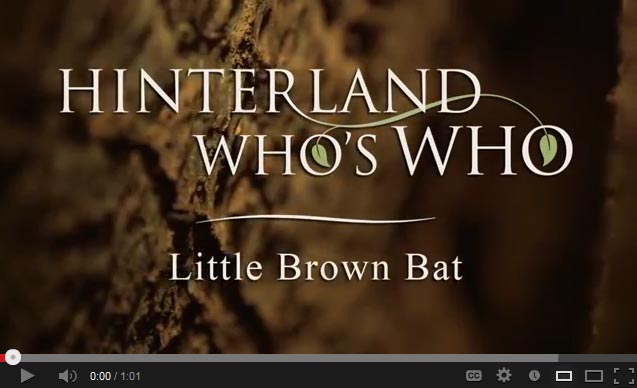Oct 13, 2017
“Many people live harmoniously with bats in and around their homes,” said Rick Bates, CEO of the Canadian Wildlife Federation. “This is critical as the loss of habitat has made bats more reliant on human-made structures like homes, garages, barns and buildings for annual roosting sites.”
Bats face many threats. White-nose syndrome has killed over six million resident and hibernating bats in North America. At many hibernation sites, all of the bats died from the devastating disease. Other threats include pesticides and wind turbines. Since females typically only give birth to one pup a year, population growth rates are too slow to compete with current and future stressors. One disturbance and we could lose a whole generation of bats.
To promote the protection and recovery of the endangered Little Brown Bat, the Canadian Wildlife Federation (CWF) is collaborating with humane wildlife control companies in Ottawa to develop best management practices to professionally manage bats by:
- Establishing professional standards of practice when dealing with bats
- Only evicting bats at the time of year that is not harmful to the pups
- Providing alternative roosting sites
- Increasing public awareness, community engagement, and citizen science
- Researching and developing alternatives to eviction including building retrofits, partitions, and annual maintenance
Where eviction is necessary, CWF is collaborating with wildlife control companies to provide bat houses to willing homeowners in the Ottawa region. Before the bat houses are deployed, CWF conducts site visits to determine the bat species present and size of the colony. Sites with the endangered Little Brown Bat present, and subsequently faced with eviction, are prioritized. After bat house deployment, CWF will monitor any changes in roosting habits of each bat colony.
Homeowners in other areas of Canada can purchase bat houses from CWF. Little brown bats are also available for symbolic adoption. For additional information on bats, to purchase resources and to find out if you’re eligible to win a bat detector, please visit HelptheBats.ca.
-30-
Contacts:
Mike Anissimoff
Bat Conservation Specialist
Canadian Wildlife Federation
mikea@cwf-fcf.org
Heather Robison
Media and Community Relations Officer
heatherr@cwf-fcf.org
(306) 540-5302
Backgrounder:
Yearly Cycle of the Little Brown Bat:
The endangered Little Brown Bat roosts in buildings during spring, rears its pups over summer, and leaves for winter hibernaculum during autumn. If eviction occurs before the pups learn to fly (late August), they will die without any way of escaping. By installing a bat house prior to eviction, home owners offer an alternative roosting site.
Bat Facts:
- Canadian bats have a tremendous appetite and play the critical role of nature’s insect control, saving the agriculture industry millions of dollars
- Bats have a very long life span compared to other mammals their size: the Endangered Little Brown Bat can live over 30 years
- Female bats typically have one pup per year; meaning, bats have very slow population growth
- Bats do not fly blindly into your hair.
- Bats have good vision.
- Bats will not attack you, and won’t suck your blood.
- Cases involving bats and rabies in Canada is rare. However, all mammals can contract and transfer rabies not just bats. In general, the public should avoid handling wildlife.
- Histoplasmosis is a lung infection that is often associated with bat guano but in reality, the fungal spores that cause histoplasmosis can be found in soil and the feces of both humans and animals, including, but not limited to: horses, cattle, dogs, cats, birds (including chickens), rats, skunks, opossum, and bats.
Learn more about bats by visiting HelptheBats.ca or by watching our Hinterland Who’s Who videos about Little Brown Bats.
About the Canadian Wildlife Federation:
The Canadian Wildlife Federation is dedicated to fostering awareness and appreciation of our natural world. By spreading knowledge of human impacts on the environment, sponsoring research, promoting the sustainable use of natural resources, recommending legislative changes and co-operating with like-minded partners, CWF encourages a future in which Canadians can live in harmony with nature. Visit CanadianWildlifeFederation.ca for more information.

